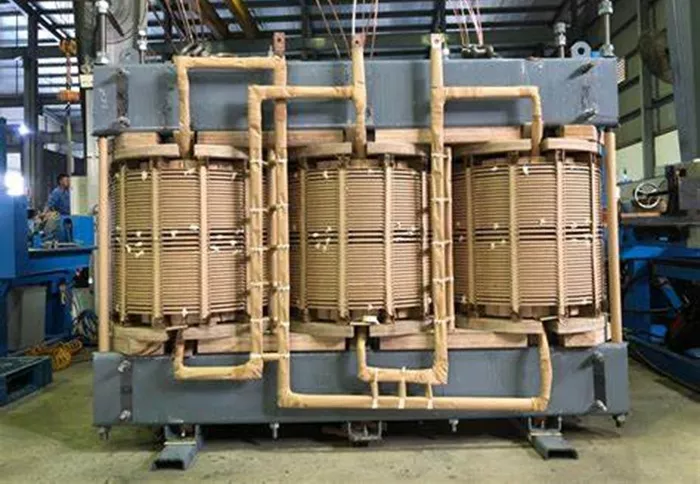Transformers are essential devices in the electrical engineering field, used to transfer electrical energy between circuits through inductively coupled conductors. Their invention and development have had a profound impact on modern electrical systems, enabling efficient power transmission and distribution. This article will explore the history of transformers, from their early origins to the modern devices we use today.
Early Beginnings: The Concept of Induction
The story of transformers begins with the discovery of electromagnetic induction. In the 1830s, both Joseph Henry in the United States and Michael Faraday in the United Kingdom independently discovered the property of induction. This discovery laid the foundation for the development of transformers, as it demonstrated that a changing magnetic field could induce an electromotive force (EMF) in a conductor.
Induction Coils and Early Applications
Building on this discovery, Rev. Nicholas Callan of Maynooth College, Ireland, invented the induction coil in 1836. This device used a primary coil and a secondary coil to step up voltages, and it was primarily used in early electrical experiments and medical applications. The induction coil became a crucial component in the development of transformers, as it demonstrated the potential for transforming electrical energy.
The First Transformers: Pioneering Designs
The first devices resembling modern transformers emerged in the late 19th century. In 1876, Pavel Yablochkov used induction coils in his lighting system, which was a significant step forward. However, it was the work of the Ganz Company in Hungary that truly paved the way for practical transformers.
The Ganz Company’s Contributions
Between 1878 and 1883, the Ganz Company in Budapest developed the first toroidal-shaped transformer, which was used in their AC incandescent lighting systems. This design featured a closed-core transformer with a toroidal shape, which was more efficient than previous open-core designs. The Ganz Company’s transformers were used in several early electrical installations, demonstrating the potential for AC power systems.
Gaulard and Gibbs: The Secondary Generator
In 1882, Lucien Gaulard and John Dixon Gibbs built a “secondary generator,” which is now known as a step-down transformer. Their design featured an open iron core and was used in a public exhibition in Italy in 1884 to demonstrate the transmission of electrical power over long distances. Although their design was not very efficient, it caught the attention of George Westinghouse, who purchased the rights to their transformer design.
William Stanley and the Commercialization of Transformers
The development of transformers took a significant leap forward with the work of William Stanley. In 1885, George Westinghouse ordered a Siemens alternator and a Gaulard and Gibbs transformer, and Stanley began experimenting with this system. Stanley made several important design changes, including the use of a single core of soft iron and adjustable gaps to regulate the EMF in the secondary winding. His design was more practical and easier to manufacture, making it suitable for commercial use.
The Great Barrington Experiment
In 1886, William Stanley successfully used his transformers in the electrification of downtown Great Barrington, Massachusetts. This was the first demonstration of a full AC power distribution system using step-up and step-down transformers. Stanley’s transformers allowed for the efficient transmission of electrical power over long distances, overcoming the limitations of direct current (DC) systems.
Further Developments and Improvements
Following Stanley’s success, transformers continued to evolve. In the late 1880s, Albert Schmid improved Stanley’s design by extending the E-shaped plates to meet a central projection. This further enhanced the efficiency and practicality of transformers.
The Three-Phase Transformer
In 1889, Russian-born engineer Mikhail Dolivo-Dobrovolsky developed the first three-phase transformer in Germany. This innovation allowed for the transmission of electrical power in three phases, which increased the efficiency and capacity of electrical systems. The three-phase transformer became a cornerstone of modern power distribution systems.
Modern Transformers: Efficiency and Innovation
Today’s transformers are the result of over a century of continuous improvement. Modern transformers are designed to be highly efficient, compact, and capable of handling large amounts of electrical power. They are used in a wide range of applications, from small electronic devices to large-scale power grids.
Advancements in Materials and Design
Advancements in materials science have played a crucial role in the development of modern transformers. High-permeability magnetic materials, such as silicon steel, have improved the efficiency of transformers by reducing energy losses. Additionally, modern designs incorporate advanced cooling systems and insulation materials to ensure reliable operation under various conditions.
Smart Transformers and the Future
With the advent of smart grids and the Internet of Things (IoT), transformers are becoming smarter and more connected. Smart transformers are equipped with sensors and communication capabilities, allowing for real-time monitoring and control of electrical systems. These advancements are expected to further enhance the efficiency and reliability of power distribution networks in the future.
Conclusion
The history of transformers is a testament to human ingenuity and the relentless pursuit of innovation. From the early experiments with induction coils to the sophisticated devices we use today, transformers have revolutionized the way we generate, transmit, and use electrical power. As technology continues to advance, transformers will undoubtedly play a vital role in meeting the growing demands of modern society. Their evolution is a reminder of the importance of continuous improvement and the impact that seemingly simple devices can have on the world around us.
Related Topics:

